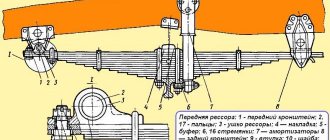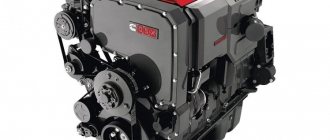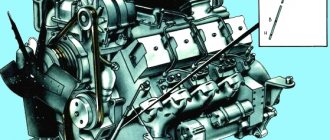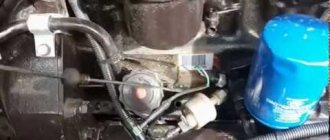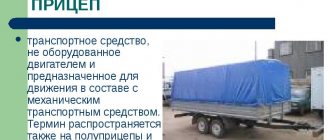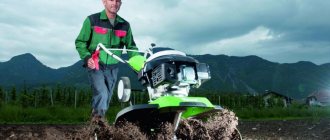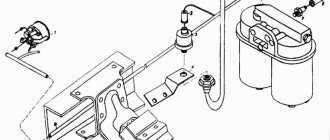Motor oils for Kamaz engines
When carrying out maintenance of KAMAZ engines, it is recommended to use high-quality motor oils “KAMAZ OPTIMUM S AE 5 W-40, 10W-40, 15W-40” STO 00148636-006-2007 as amended. 2 or similar from the list of motor oils given on the official website www.kamaz.ru. Depending on operating conditions, it is recommended to use motor oils of the following SAE viscosity classes:
- SAE 5W-30, 5W-40 (all-season operation in areas with cold climates);
- SAE 15W-40, 10W-40 (all-season operation in temperate climate zones);
- SAE 20W-50 (all-season use in tropical climates).
Characteristics of Kamaz-740
| Production | KAMAZ-Diesel |
| Engine make | 740 |
| Years of manufacture | 1975-present |
| Cylinder block material | cast iron |
| engine's type | diesel |
| Configuration | V-shaped |
| Number of cylinders | 8 |
| Valves per cylinder | 2 |
| Piston stroke, mm | 120 130 |
| Cylinder diameter, mm | 120 |
| Compression ratio | 16.0 16.8 17.0 |
| Engine capacity, cc | 10850 (Euro-0/1/2) 11760 |
| Engine power, hp/rpm | 210/2600 220/2600 240/2200 260/2600 260/2200 260/2200 280/1900 290/2200 300/2200 320/2200 360/1900 400/2200 420/1900 440/1900 |
| Torque, Nm/rpm | 667/1600-1800 667/1600-1800 834/1400 834/1600-1800 932/1400 1079/1300 1177/1300 1216/1400 1177/1400 1275/1400 1569/1200-1400 1570/1400 1864/1300 2060/1250-1350 |
| Environmental standards | Euro 0-5 |
| Turbocharger | TKR 700 TKR 7N1K |
| Engine weight, kg | 750 (740.10) 842 (740.11) 865 (740.30/35) 870 (740.602/70) 885 (740.35/50/60) |
| Fuel consumption, l/100 km (for KamAZ-55111) | 36.5 |
| Oil consumption, % of fuel consumption, up to | 0.8 (7403) 0.6 (740.10) 0.3 (740.11) 0.2 (740.30/35/37/38/50) 0.1 (740.60) 0.06 (740.70) |
| Engine oil | 5W-30 15W-40 |
| How much oil is in the engine, l | 28 |
| Oil change carried out, km | 16000 |
| Dimensions, mm: - length - width - height | (740.10) 1150 893 1007 |
| Engine life, km - according to factory data - in practice | 400 000/800 000/1 000 000 — |
| Tuning, hp — potential — without loss of resource | — — |
| The engine was installed | KamAZ-4306, 4310, 43101, 43114, 43115, 43118, 43253 KamAZ-4326, 4350, 43501, 4925 KamAZ-5297, 5315, 5320, 53212, 53213, 53215, 53228 , 53229 KamAZ-5325, 5350, 53605, 5410 , 54112, 54115, 5415 KamAZ-5425, 5460, 55102, 5511, 55111 KamAZ-6350, 63501, 6450, 6460, 65111, 65112, 65115, 65116, 65117 KamAZ-652 0, 65201, 6522, 65221, 65224, 65225, 6540, 6560 Ural-4320, 5323, 5557 ZIL-133 AGMS GAZ-5903 LiAZ-5256 NefAZ-4208, 42111, 5297, 5299, 5633, 6606, AC-3.0-40 |
Transmission oils
The list of transmission oils approved for operation of KAMAZ transmission units is given in Table B.3. Depending on operating conditions, it is recommended to use gear oils of the following SAE viscosity classes:
- SAE 75W-90 (all-season use in cold climates);
- SAE 85W-90, SAE 80W-90 (all-season operation in a temperate climate zone);
- SAE 85W-140 (all-season use in tropical climates).
What kind of oil to fill in KAMAZ - tolerances and replacement recommendations
Modern construction equipment requires intensive use in difficult working conditions. The domestic KAMAZ truck stands out from the general range of similar vehicles. This device is famous for its reliability, unpretentious design and durability. Such qualities are primarily due to the simple, reliable design of the power plant. However, the parameters are only possible if the engine components have good lubrication; otherwise, the machine’s motor will quickly wear out and fail, which can lead to significant restoration costs. Therefore, the oil in KAMAZ must be chosen correctly.
Transmission oils ZF
Attention! Operate ZF gearboxes strictly with oils approved by ZF. Complete information on oils (list, conditions of use and change periods) can be found at any ZF service center or on the website www.zf.com. The information on this site is updated every three months. Each subsequent edition cancels all previous versions. Table B.6 shows an incomplete list of oils from the most well-known manufacturers for the operation of ZF manual transmissions (list of lubricants TE-ML 02, version 01/01/2016). For the ZF 9S1310 gearbox, oils of the following classes are recommended: 02B, 02E, 02L. The frequency of changing oils in ZF gearboxes and the temperature range of their use are given in tables B.4, B.5.
Attention! It is allowed to mix different brands of oils only within the same class of the list of lubricants TE-ML 02.
Reliability, problems and repair of KAMAZ 740
The production of engines for trucks at the Kama Automobile Plant began in 1975 and this was the first internal combustion engine for KamAZ vehicles. This engine has an 8-cylinder cast iron V-shaped cylinder block with a camber angle of 90° with a cylinder bank offset of 29.5 mm and with wet cast iron liners. The block is equipped with a steel crankshaft with a piston stroke of 120 mm, the diameter of the main journals is 95 mm, and the diameter of the connecting rods is 80 mm. The connecting rods are made of steel (225 mm long), the pistons are made of aluminum (their height is 75.7 mm), and they have a combustion chamber offset of 5 mm from the center. Piston pin diameter 45 mm. In turbo versions, the pistons are cooled using oil nozzles installed in the cylinder block. Oil pressure on KamAZ 740 is 4.0-5.5 kgf/cm2.
Separate cast iron heads are installed on top of the block for each cylinder separately, each cylinder head has 2 valves. The diameter of the intake valve plates is 51.6 mm, and the exhaust valves are 46.6 mm. The camshaft is located in the cylinder block and operates the valves through rods, pushrods and rocker arms. The camshaft drive is gear driven from the crankshaft. On the base Euro-0 engine, the camshaft characteristics are as follows: phase 242/256, lift 14.2/13.7 mm. Adjustment of valves on KamAZ 740 is required as necessary, valve clearances: inlet 0.3 mm, exhaust 0.4 mm. The valve adjustment order is: 1-5-4-2-6-3-7-8. For this internal combustion engine there was a YAZDA 33 pump and 33-03/10 injectors, later they were repeatedly changed to a variety of versions (see below for more details).
STEERING OIL
To operate a steering system equipped with either a pump and/or a ZF steering gear, it is necessary to use automatic transmission fluid (ATF). Recommendations for use and approved types of liquids are given in the list of lubricants TE-ML 09 at www.zf-lenksysteme.com/schmierstoffe bzw. www.zflenksysteme.com/lubricants. ZF recommends the use of mineral-based ATF fluids without specifying specific brands that meet the requirements of Dextron II D, III F, III G, III H General Motors specifications (viscosity about 26 mm2/s at 50 ° C, pour point no higher than minus 40 ° WITH). ATF fluids of class 09X (on a synthetic basis, with improved low-temperature properties) are especially approved by ZF. Liquids of class 09X are given in Table B.7.
Attention! Mixing different brands of oils is prohibited.
How often should you change the oil?
The maintenance regulations state that replacing lubricants in a KAMAZ engine unit is necessary every 10,000 kilometers.
Remarkable. Lubricants intended for extended service intervals must also be replaced no later than the period established by the regulations. This is necessary due to the high load on the power unit, which causes intense wear of parts and fluids.
Possible consequences of violating the maintenance schedule
In case of neglect of the requirements of the manufacturer, there is an accumulation of side factors that reduce the performance characteristics of the truck engine.
The most common consequences of untimely replacement of lubricant are the following factors.
The combination of these factors leads to premature wear or complete failure of the KAMAZ engine. Therefore, preventive measures should be carried out according to the manufacturer's recommendations.
Factors influencing premature wear of lubricants
There are several factors that can provoke intense wear of lubricants, which leads to their premature replacement.
COOLANT
Coolant is a balanced mixture of antifreeze and water. The presence of antifreeze allows you to expand the range of operating temperatures, lowering the freezing point and increasing the boiling point of the coolant. The additives included in antifreeze protect the engine cooling system from cavitation corrosion. Coolants based on ethylene glycol are approved for operation of KAMAZ engines. The list of coolants approved for use in the cooling system of KAMAZ engines is given in tables B.8, B.9. The use of coolants is mandatory in all climate zones. In a temperate climate zone, it is recommended to use coolants with an antifreeze concentration of 40% (OZh-40 “Lena”, “Tosol-A40M”, “Cool Stream Standard 40”, etc.). In cold climate zones, it is recommended to use coolants with an antifreeze concentration of 65% (OZh-65 “Lena”, “Tosol-A65M”, etc.). During operation, it is necessary to monitor the density of the coolant. Thus, the density of the coolant at a temperature of 20 °C should be:
- Coolant-40 “Lena” - (1.075 - 1.085) g/cm3;
- “Cool Stream Standard 40” - (1.068 - 1.070) g/cm3;
- “Tosol-A40M” - (1.078 - 1.085) g/cm3;
- Coolant-65 “Lena” and “Tosol-A65M” - (1.085-1.1) g/cm3;
- “Antifreeze (-45) FELIX®” - (1.065-1.085) g/cm3;
- Antifreeze “X-Freese Carbox” G12 - (1.065-1.085) g/cm3;
- Coolant -40 “TORSA-TOSOL-103” - (1.075-1.085) g/cm3;
- SINTEC Antifreeze-40 - (1.065-1.085) g/cm3;
- “KAMAZ-STANDARD 40” - (1.068 - 1.072) g/cm3;
- "KAMAZ-STANDARD 65" - (1.083 - 1.085) g/cm3.
If the density of the coolant is below the minimum permissible value, the fluid must be replaced. If the coolant density is higher than the maximum permissible value, the coolant density should be adjusted by adding demineralized water. Coolants ES Compleat and Old World Fleet Charge Coolant are recommended for refilling the cooling system of Cummins engines. Old World Fleet Charge finished products are available with varying antifreeze contents. Coolant Old World Fleet Charge Coolant 50/50 (antifreeze content - 50%) is operational down to minus 37 ° C; Old World Fleet Charge Coolant 60/40 (antifreeze content - 60%) is operational down to minus 52 °C. Finished ES Compleat products are available with different antifreeze contents. Coolant ES CompleatTM EG Premix 50/50 (antifreeze content – 50%) is operational down to minus 36 °C; ES CompleatTM EG Premix 60/40 (antifreeze content – 60%) is operational down to minus 54 °C.
Depending on the operating conditions, it is necessary to use one or another product. For complete information on the coolants recommended by the company, see the Cummins Engine Operation and Maintenance Manual.
Consequences of violating the regulations
Inattention to the requirements of the automaker, which manifests itself in non-compliance with the maintenance schedule, leads to a decrease in the performance characteristics of the car engine due to the accumulation of various side factors. Professional mechanics call the most common negative consequences arising from untimely change of lubricant:
- premature increased wear of structural elements of the cylinder-piston group;
- corrosion processes on the internal surfaces of power unit parts;
- changes in exhaust characteristics and increased formation of soot;
- formation of atypical and harmful deposits in the on-board oil system.
- increased friction between parts, leading to constant overheating of components and mechanisms;
- significant reduction in the service life of engine rubber and bearings.
All these factors together lead to premature wear of the structural elements of the internal combustion engine or complete failure of the power plant of the KAMAZ vehicle. For this reason, compliance with regulated maintenance periods and current preventive measures is a mandatory condition for operating a truck.
Accelerated wear factors
Professionals identify several main reasons that contribute to the intensive wear of engine oil lubricants, which leads to the need to replace the engine lubricant.
- Using low-quality fuel. Poor quality fuel has a negative impact on the fuel mixture injection system into the power unit, and also causes increased soot emission and increased heating of the unit.
- Operation in harsh conditions. The combination of using increased engine speeds and vehicle overload, as well as poor quality roads and driving in stop/start mode lead to a decrease in the effective lubricant life.
- Poor quality oil. Using a lubricant of unknown origin or low-quality lubricants, you cannot count on efficient and full operation of the power plant.
- Poor technical condition of the internal combustion engine. Significant wear of valves and other structural elements of the engine, as well as low cylinder compression, are the reason why engine oil quickly becomes contaminated, losing its original parameters and properties.
Replacing oil filters
Oil filters are located on the heat exchanger housing. To replace the oil filter, the glasses are unscrewed from the platform.
After which the old filter is removed. Special rubber bands are used as seals. It is advisable to change them at every oil change. They are always available in stores. But they are not always of high quality. Sometimes when installing new rubber bands. Oil starts running out from under them. And no attempts to stop him. Handing out glasses does not lead to results. Rubber bands installed at the manufacturer's factory. Very high quality. And there is no point in exchanging them for store-bought ones. If the elastic bands are elastic. And it is better to leave them undamaged at least during the first oil change.
Subsequently, they will still lose their properties. When purchasing new elastic bands, you need to pay attention to the size of the thick, flat elastic band. It must match the size installed on the engine. Sometimes they sell elastic bands that are thinner. And you won't be able to tighten them. Oil will leak out from under them. And as a result, you just throw them away. Putting the old ones in place.
It is very important to inspect the removed filters; there will definitely be shavings present on them. If the chips are small, then it’s okay, these are the consequences of engine grinding. But if the shavings are copper and have the form of small flakes. you need to be careful. and remove the pan. most likely the main liners began to break. It’s not yet too late, they can be replaced without removing the engine

